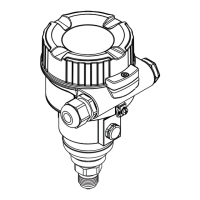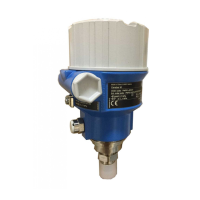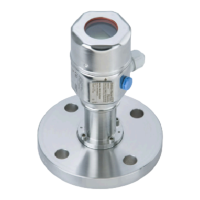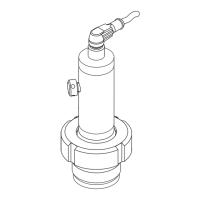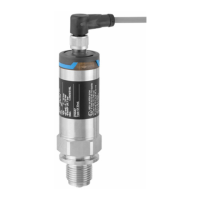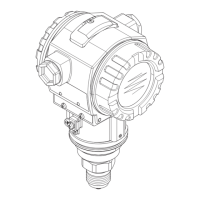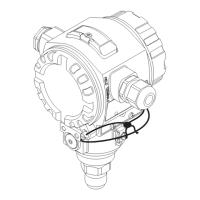Cerabar M
Endress+Hauser 59
Planning instructions for diaphragm seal systems
Applications Diaphragm seal systems should be used if the process media and the device should be separated. Diaphragm
seal systems offer clear advantages in the following instances:
• In the event of high process temperatures (→ see also Page 29, "Process temperature limits" section.)
• For aggressive media
• If good and rapid measuring point cleaning is necessary
• If the measuring point is exposed to vibrations
• For mounting locations that are difficult to access
• For very humid mounting locations
Planning instructions Diaphragm seals are separating units between the measuring system and the fluid.
A diaphragm seal system consists of:
• A diaphragm seal
• A capillary tube where applicable
• Fill fluid
• A pressure transmitter.
The process pressure acts via the diaphragm seal membrane on the liquid-filled system, which transfers the
process pressure via the capillary tube onto the sensor of the pressure transmitter.
Note!
The correlations between the individual diaphragm seal components are presented in the following section.
For further information and comprehensive diaphragm seal system designs, please contact your local
Endress+Hauser Sales Center.
Diaphragm seal
The diaphragm seal determines the application range of the system by
• The diaphragm diameter
• The diaphragms: stiffness and material
• The design (oil volume)
Diaphragm diameter
The larger the diaphragm diameter (less stiffness), the smaller the temperature effect on the measurement
result.
Note: To keep the temperature effect in practice-oriented limits, you should select diaphragm seals with a
nominal diameter ≥ DN 80, in as far as the process connection allows for it.
Diaphragm stiffness
The stiffness is dependent on the diaphragm diameter, the material, any available coating and the diaphragm
thickness and shape. The diaphragm thickness and the shape are defined in construction. The stiffness of a
diaphragm seal membrane influences the temperature operating range and the measuring error caused by
temperature effects.
Capillary
Capillaries with an internal diameter of 1 mm are used as standard.
The capillary tube influences the T
K
zero point, the ambient temperature operating range and the response
time of a diaphragm seal system as a result of its length and internal diameter.
→ See also Page 61 ff, "Influence of the temperature on the zero point" and "Ambient temperature range"
sections.
→ Observe the installation instructions regarding capillary tubes. See Page 65, "Installation instructions"
section.

